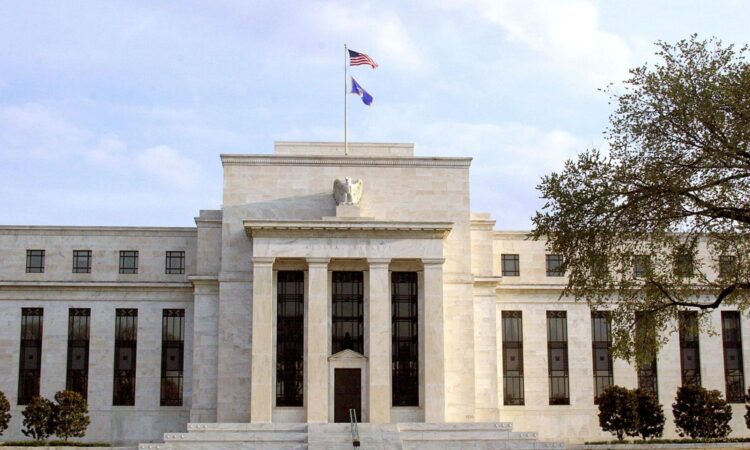US Fed outcome today: Rate cut could begin after March, experts suggest focus on fundamentals, ignore Fed frenzy

The two-day policy meeting of the US Federal Reserve will conclude on Wednesday, January 31.
While the market has discounted a status quo on interest rates, the focus will be on Fed Chair Jerome Powell’s hints on how the central bank sees inflation evolving from here and when it intends to start reducing interest rates.
So far, the Fed has been reiterating that the fight against inflation is not over yet. To tame inflation, the Fed has raised rates at a 23-year high of 5.25-5.5 per cent.
The majority of experts now anticipate the US Federal Reserve to initiate rate cuts starting in May or June, considering the resilient US job market and inflation, which continues to surpass the Fed’s 2 per cent target.
Also Read: What to expect from the US Fed?
When can the Fed start reducing rates?
Experts believe it is too early to expect a rate cut in March as the US economy remains strong and geopolitical concerns persist.
Sujan Hajra, Chief Economist at Anand Rathi Shares & Stock Brokers underscored that the recent trends indicate a significant softening of inflation in the US, fueling market expectations of a potential rate cut by the Federal Reserve as early as March 2024.
Participate Daily & get a chance to win an iPhone 15 and smartwatches
Answer today’s question below!
However, considering the stronger-than-expected US economic growth, the robust state of the labour market, and the risk of reigniting inflation by prematurely initiating rate cuts, a rate reduction in March seems unlikely, Hajra said.
Even with the looming possibility of the US economy entering a recession in the latter half of 2024, the Federal Reserve is anticipated to exercise caution, aiming to maintain stable inflation expectations in the US, Hajra added.
According to Achala Jethmalani, Economist at RBL Bank, the odds of a March rate cut are dim given the resilience of the US economy and the current labour market conditions.
“With CPI inflation marching closer to the 2 per cent goal in the ensuing months, we see the first cut to get delivered at the June policy,” said Jethmalani.
Forget the Fed, focus on domestic fundamentals
Many experts suggest investors should focus more on strong domestic fundamentals and less on the Fed outcome. India is on a robust economic growth path and investors have a plethora of opportunities to reap the benefits.
As Mint reported, in its review of the Indian economy, released on Monday, January 29, the government says India can become a $7 trillion economy by 2030. That means it will almost double its GDP in the next six years.
Also Read: Mint Primer: Can India become a $7 trillion economy by 2030?
India has moved from being the 10th largest economy in the World a decade ago to being the fifth largest. The size of its GDP is estimated to reach $3.7 trillion by the end of 2023-24.
“Over the past two decades, India’s rapid economic progression and significant structural changes have been instrumental in its equities producing the highest average dollar returns among the top 20 global equity markets, across all time horizons ranging from one to twenty years,” said Hajra.
“This emphasises the importance for Indian investors to prioritise domestic factors over external ones, including those related to the US Federal Reserve. Also, the increasing participation of domestic institutions in the Indian equity market has considerably diminished the impact of cross-border fund flows,” Hajra said.
However, Hajra added that given India’s integration into the global economic system, it is inevitable that its asset returns will be influenced by international dynamics to some extent.
Also Read: IMF projects strong India growth in 2024, says global ‘soft landing’ in sight
Santosh Pandey, President and Head of Nuvama Professional Clients Group underscored that India is the fastest growing economy in the world and is projected to be so for many more years.
Huge investments are happening in ports, roads, power, renewable power, railways, metro and defence and this all will lead to higher growth in India.
Pandey pointed out that we are still only a $3.5 trillion economy with such a big population, therefore there is a huge scope for us to grow from here. This means investors have enough opportunities to invest in the domestic theme.
Jethmalani expects the government to continue with its infrastructure spending, policy actions by the US Fed would only contribute positively to investor sentiments.
“The monetary loosening by the US Fed would mean easing financial conditions, overall auguring well for EM (emerging market) assets. The domestic growth story remains intact for the next decade given that the government is unlocking value in the government-run companies and increased focus on boosting the manufacturing sector. This is seen to insulate India’s growth momentum from external developments,” said Jethmalani.
Read all economy-related news here
Disclaimer: The views and recommendations above are those of individual analysts, experts and broking companies, not of Mint. We advise investors to check with certified experts before making any investment decisions.
Unlock a world of Benefits! From insightful newsletters to real-time stock tracking, breaking news and a personalized newsfeed – it’s all here, just a click away! Login Now!






